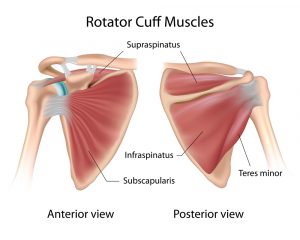“But my pain isn’t there” are words spoken by many patients. Many musculoskeletal issues, like back pain, are often non-attributable to standard tissue-related diagnosis and as a result, we need to focus on the interrelationship between muscles and their functions to understand those types of issues.
This is related to the concept of regional interdependence which asserts that seemingly unrelated musculoskeletal impairments in remote anatomical and body regions may be associated with one another or can contribute to one another.
What this means is that the body needs to be observed in its entirety if we are to truly understand it. This runs in opposition to the traditional medical model where each component is assessed in isolation.
Vladimir Janda, the late 1960’s physical therapist, was ahead of his time in understanding this concept when we stated, “the motor system functions as an entity. It is a principally wrong approach to try to understand impairments of different parts of the motor system separately without understanding the function of the motor system as a whole.”
When we embrace this concept wholeheartedly we can begin to see human movement from a holistic standpoint.
One way to view regional interdependence is through the interrelationship between mobile and stable segments of the body. If you consider any joint that has primary movement in one plane of motion a stable joint and those that don’t have just one primary range of motion a mobile joint you can observe that the human body works in a pattern of alternating stable segments connected by mobile segments.
By looking through this lens of regional interdependence and alternating mobility and stability you can see how dysfunction in this pattern will occur through predictable patterns of compensation.
For example, Crossfit athletes often present with low back pain, shortened hip flexors, and a lack of thoracic spine mobility.
This lack of mobility and range of motion in the hips and thoracic spine, which should be mobile segments, causes compensation patterns when the lumbar spine, which should be a stable segment, sacrifices that stability in order to obtain more range of motion.
As a result, they often end up with low back pain that is non-attributable to the standard tissue-based diagnosis and in turn, often goes unresolved.
This same concept can be applied to other areas of the body as well. For example, one might lose thoracic mobility and get neck and shoulder pain as a result of losing wrist mobility and get elbow pain. Because of this examination of joints that are both either side of the joints that are afflicted with pain is a crucial concept of regional interdependence.
There is a plethora of research on how proximal exercise or manual therapy can change pain elsewhere and how pain in one location can cause changes in other areas.
There are numerous examples in the literature of regional interdependence – a number of studies demonstrate that thoracic spine adjustment can significantly improve neck pain and disability.
Examples:
Cervical spine adjustments create hypoalgesia and improved motor control at the elbow.
Exercise interventions to the hip improve patellofemoral pain symptoms.
Hip manual therapy and exercise interventions can help decrease pain and disability at the knee.
References: Evan Peikon-Basic principles applied to all of us on this planet.


